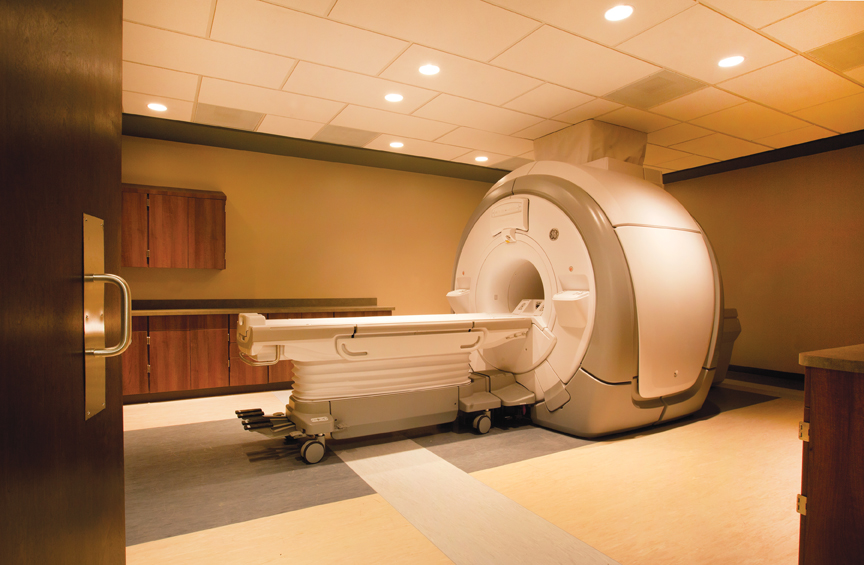More than 150 veteran healthcare facilities architects assembled in Chicago recently for the joint Summer Leadership Summit of the American College of Healthcare Architects and the AIA Academy of Architecture for Health. The topic on everyone’s mind, of course, was how the Affordable Care Act would impact healthcare design and construction––and whether the law would even make it past the coming election cycle.
Lessons in cost savings from the Geisinger Clinic
Robert W. Davies, Chief Support Services Officer at Geisinger Health System, kicked off the program with a report on the impact of healthcare reform on facilities planning.
Geisinger Health System, founded in rural Danville, Pa., in 1915, has more than 18,000 employees, of whom about a thousand are salaried physicians who provide medical care at 65 clinic sites.
Along with the Mayo and Cleveland Clinics, Geisinger was held up by the Obama Administration as a poster child for “accountable care organizations” in the run-up to the passage of the Affordable Care Act.
Among Geisinger’s recent healthcare delivery innovations, Davies cited its branded provencare program, which offers a warranty to cardiac surgery patients. A related program provides extensive follow-up care for chronic disease patients, such as those with diabetes.
As for its capital construction program, Geisinger Health has 1,600 beds in 288 buildings, totaling six million square feet. In anticipation of healthcare reform, the clinic has developed a strategic facilities plan to keep costs in line, Davies said. Among its components:
- All properties will be owned; leases will be a thing of the past.
- Standardization––of office equipment, exam rooms, signage, space standards, and clinic design––is being fiercely implemented.
- Operating expenses are being trimmed through the use of co-generation systems, chilled water storage, and isolation cleaning systems. The latter use vaporized hydrogen peroxide or UV systems to clean patient rooms and thereby help control hospital-caused infections.
- Nonclinical functions and staff are being moved off the main campus. “The IT people insisted that they had to be on campus, but we convinced them that they could do fine two or three miles away,” said Davies.
Geisinger expects to make substantial routine infrastructure improvements, investing $8.1 million in “risk operations” improvements, Davies said. The health provider currently allocates $1.35/sf a year for routine infrastructure improvements; Davies said he hopes to reach the goal of $2.00/sf per year.
Davies said he and his staff of 40 FTE facility specialists (including three architects) have been concentrating on increasing the reliability of facilities and equipment. For example, the clinic stocks spare transformers and engines, just in case they’re needed. And many of Geisinger’s old masonry buildings have been treated to façade restorations to keep them functioning properly.
Davies said his team has used Procore project management software (www.procore.com) to great effect. “It’s one of the best buys we ever made,” he told the Summit audience.
As for sustainability, Davies said, “We don’t make a big deal about it. We insist on quality materials, but nothing over the top.”
Yet not even Geisinger is perfect. A review of its facilities practices by construction manager Gilbane led to 84 positive recommendations for improvement, which Davies said he and his staff are acting on.
Futurecare: It's all about consolidation, profitability
The healthcare landscape will become more tightly controlled by large organizations, according to Fred Hessler, Director, Citigroup Health Care Group. More nonprofit systems will convert parts or all of their operations to for-profit entities, and many smaller hospitals and systems will be swallowed up by megasystems––and private investors––with greater access to capital, which they are getting at “extremely low rates,” said Hessler.
He cited several examples of this trend:
- Two years ago, Cerberus Capital Management, a private equity firm in New York, acquired Caritas Christi, a six-hospital Roman Catholic system in Boston, for $830 million, and converted it to for-profit.
- Last year, private equity firm Oak Hill Capital Partners formed a partnership with Ascension Health Care Network, the largest Catholic healthcare system in the U.S. They are currently on the hunt to gobble up several Catholic systems in New Jersey.
- Last April, Health Management Associates, an operator of acute-care hospitals, established a joint venture with Integris Health to operate five rural hospitals in Oklahoma. HMA will own an 80% controlling stake in each hospital.
- Duke Health, based in Durham, N.C., formed a joint venture with lifepoint, an administrator of rural hospitals, and is now trying to plant the Duke lifepoint flag as far afield as Marquette, Mich.
Hessler said the reason for this trend is simple: Large healthcare organizations have proven to be more profitable than small ones, primarily because they can control costs more effectively.
He said megasystems of $5 billion or more in revenue produced operating margins of 4.7%, compared to 2.0% for hospital systems with less than $1 billion in revenue. In fact, the top seven for-profit systems had an average operating margin of 9.4%.
“Investors are going into partnerships with not-for-profits because nonprofits are 80% of the market,” he said. “That’s $2.6 trillion, and they smell the money.”
Digesting the data load
Lawrence Hanrahan, MD, a partner in the health industry practice of pwc, described the huge demand for data collection and storage that awaits healthcare providers.
The cost of electronic medical records could run $100 million per hospital, yet barely half of pwc’s clients have reached Stage 3 of their PACS (picture archiving and communications systems) requirements. That’s on top of another $63 million per hospital for other data-related systems, including health information exchange and ICD-10 compliance.
Data security and disaster recovery are additional frightening concerns. “Hospitals need to have their data centers a hundred miles away, in case of disaster,” he said.
Looking at hospitals from a systems perspective, Hanrahan said Building Teams need to work with healthcare clients to:
- Lead risk management and security audits of medical equipment and building systems
- Integrate medical equipment and building systems with hospitals’ clinical, financial, and research platforms
- Identify revenue-generating reuse of vacated facilities and spaces
Data analysis capabilities (along with alignment of physician staffs) will be critical to success in a future healthcare environment that will pay for value, not volume.
Hanrahan said there’s gold in all the data healthcare systems are collecting, but they’re just not mining it. “Our clients have not caught up with the fact that information technology is an enabler, just like facilities,” he said.
How best to serve veterans
How the Veterans Administration can most effectively meet the needs of its clients was the subject of a talk by Thom Kurmel, DDES, AIA, President, TDK Consulting LLC. According to Kurmel, the VA faces a gap of $3.6 billion to “correct” conditions in its facilities. The agency’s annual construction budget is about $1.2 billion; it is estimated to have a shortfall of 42 million sf of healthcare-related space.
One of the VA’s biggest problems is how to provide care, especially long-term care, for the 40% of veterans who live at great distance from VA care facilities.
Regional cost variation is another problem. For example, New England, which will lose 40,000 veterans over the next 10 years, has a cost per patient of $8,900 a year, compared to $5,600 per patient per year in Texas.
To tackle these problems, the VA is adopting several cost-saving tactics: telemedicine (for imaging, home health, and rehabilitation), extended hours at existing care sites, and contract care in rural areas through community-based outpatient clinics. Kurmel, a retired Army colonel, reminded his audience that none of these involved the construction of new facilities.
With regard to its construction projects, Kurmel noted that the Department of Veterans Affairs is extending the use of BIM, lean construction, and integrated project delivery. The VA is also coupling its master planning process to post-occupancy evaluations in order to measure outcomes and performance more accurately, he said.
Kurmel praised the VA’s Strategic Capital Investment Planning system as a “milestone” in federal planning efforts. SCIP uses pair-wise comparison software (from Decision Lens; www.decisionlens.com) to make what Kurmel described as a “very scientific” analysis of budget needs. “SCIP has set the bar for the VA as to what they will ask [in funding] from Congress,” he said.
So, will ‘Obamacare’ still be around after November 6?
Lawyers from Drinker Biddle & Reath––Julie Scott Allen, Government Relations Director, and Anna Howard, Medicare & Health Policy Director––projected various scenarios for what might happen to the Affordable Care Act after the upcoming election.
Could a President Romney actually kill the Affordable Care Act? What if President Obama is reelected but loses control of one or both Houses of Congress? Will the 33 million uninsured Americans get coverage in 2014? What if most of the states opt out of the Medicaid exchanges?
The consensus among presenters and attendees at the ACHA/AAH Summer Leadership Summit was that, no matter the outcome of the Presidential and Congressional races, healthcare reform is not going away. Traditional “fee-for-service” medicine will have to give way to a performance-based model. According to pwc’s Hanrahan, the majority of physicians in the U.S.––58%––say they are interested in being more closely integrated with their hospitals in such an effort.
But with one of every five dollars of the country’s GDP going to the medical sector, costs have to be brought down––and the healthcare design and construction industry is going to have to play its part in that effort. +
Related Stories
| May 22, 2014
BIM-driven prototype turns data centers into a kit of parts
Data center design specialist SPARCH creates a modular scheme for solutions provider Digital Realty.
| May 22, 2014
7 ways it pays to use BIM for data centers
Here’s where AEC firms and owners are getting the most bang for the buck when using BIM/VDC to coordinate data center projects.
| May 22, 2014
No time for a trip to Dubai? Team BlackSheep's drone flyover gives a bird's eye view [video]
Team BlackSheep—devotees of filmmaking with drones—has posted a fun video that takes viewers high over the city for spectacular vistas of a modern architectural showcase.
| May 22, 2014
NYC's High Line connects string of high-profile condo projects
The High Line, New York City's elevated park created from a conversion of rail lines, is the organizing principle for a series of luxury condo buildings designed by big names in architecture.
| May 22, 2014
Just two years after opening, $60 million high school stadium will close for repairs
The 18,000-seat Eagle Stadium in Allen, Texas, opened in 2012 to much fanfare. But cracks recently began to appear throughout the structure, causing to the school district to close the facility.
| May 22, 2014
Senate kills bipartisan energy efficiency bill over Keystone pipeline amendment
The legislation focused on energy efficiency standards such as water heaters with smart meters and cheaper heating and cooling systems for office buildings.
| May 22, 2014
IKEA to convert original store into company museum
Due to open next year, the museum is expected to attract 200,000 people annually to rural Älmhult, Sweden, home of the first ever IKEA store.
| May 21, 2014
Evidence-based design practices for the palliative care environment
Palliative care strives to make patients comfortable as they are receiving treatment for a severe illness. As hospitals seek to avoid Affordable Care Act penalties for poor patient satisfaction, many expect this field to grow quickly.
| May 21, 2014
Gehry unveils plan for renovation, expansion of Philadelphia Museum of Art [slideshow]
Gehry's final design reorganizes and expands the building, adding more than 169,000 sf of space, much of it below the iconic structure.
| May 21, 2014
Check out Pandora's posh NYC offices [slideshow]
The new East Coast office for the Internet radio provider is housed on two interconnected floors of the classic 125 Park Avenue building, and features multiple spaces for music performances, large gatherings, and “all hands” meetings.















